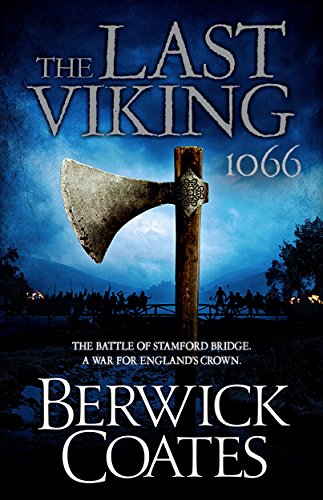The Last Viking: 1066
Harold Godwinson has boldly taken the English throne and prepares for the expected invasion from across the Channel by William of Normandy and a likely attack from his exiled brother Tostig. Additional pressure is exerted on the king by his mother and the other women in his life. His military strategy is soon complicated by rumours of a further threat in the north of his new kingdom, from Hardrada King of Norway. Berwick Coates tells the story in a complex weave through the diverse experiences of a large cast of characters ranging from kings and lords to footsoldiers and townspeople, and sets his scenes in Norway and up and down the length of England. The scenes are very short and do not linger long enough to allow the reader to fully engage with many of the characters.
The convincing and historically accurate detail of the novel is very well researched, including the appearance of what we now know of as Halley’s Comet, the dilemmas and strategic choices made by King Harold, and the planning of Scarborough’s defence by the town’s leaders; however, the research and exposition is often too explicit in the dialogue.
Using the convergence of the two sides in the battle of Stamford Bridge against the Norwegian invaders in 1066 which immediately preceded the more familiar battle of Hastings, is an effective structure for the novel, but the pacing is often rather laboured. Coates’ depictions of Harold’s network of clerical spies and bantering Welsh archers, on the other hand, are effective, and the banal hardships of warfare are vividly imagined: marching on sore feet and empty stomachs, digging latrines, rain and mud.










